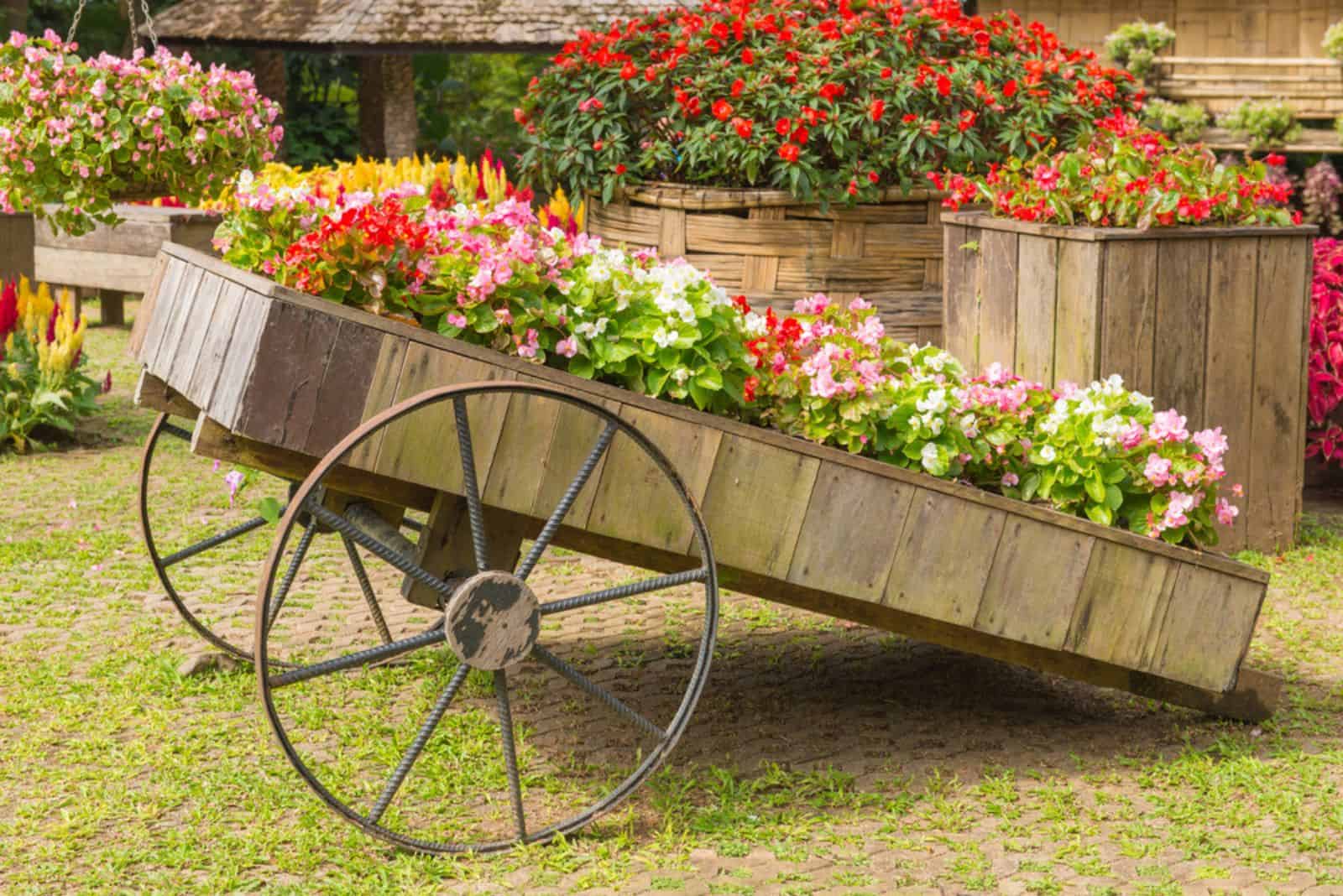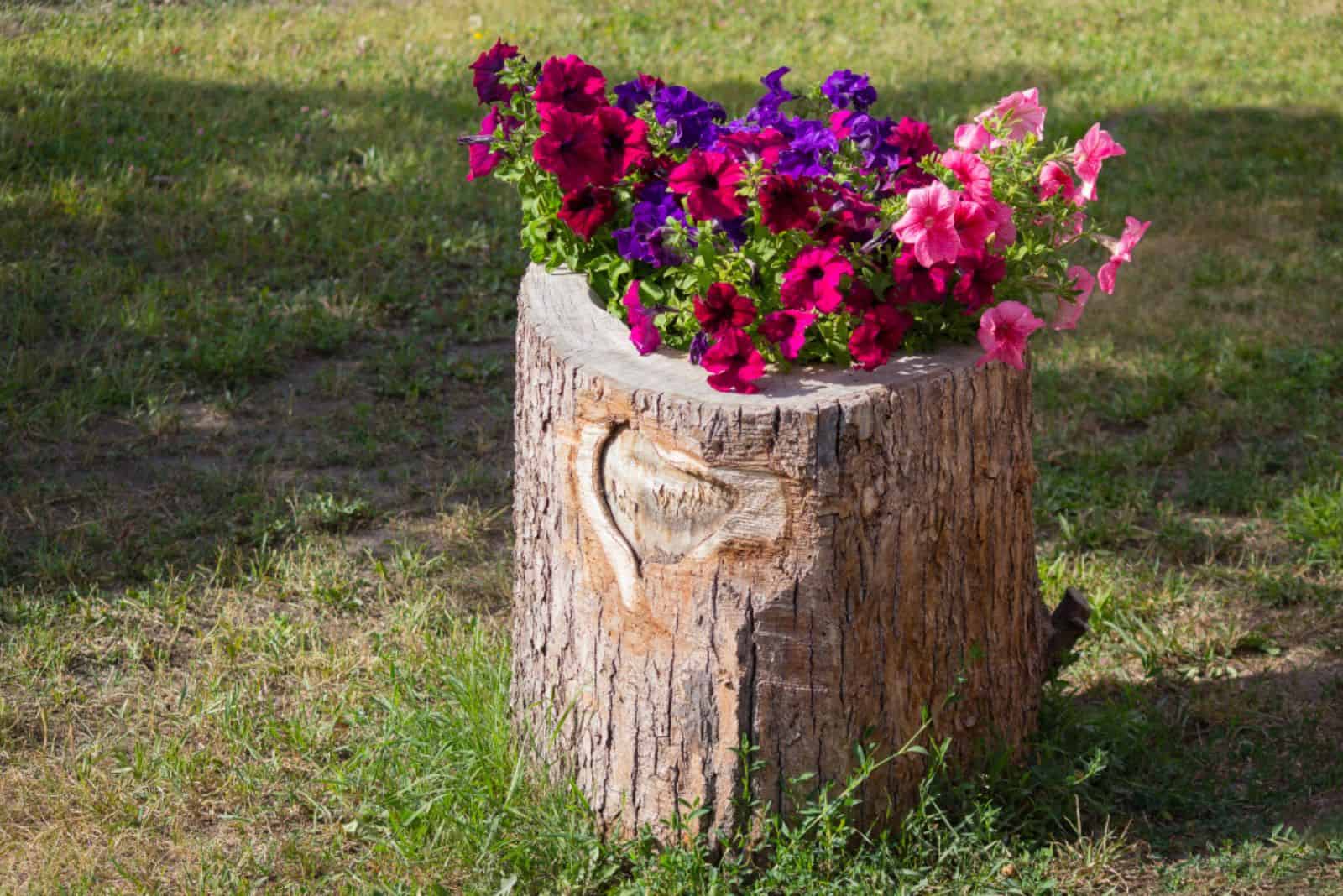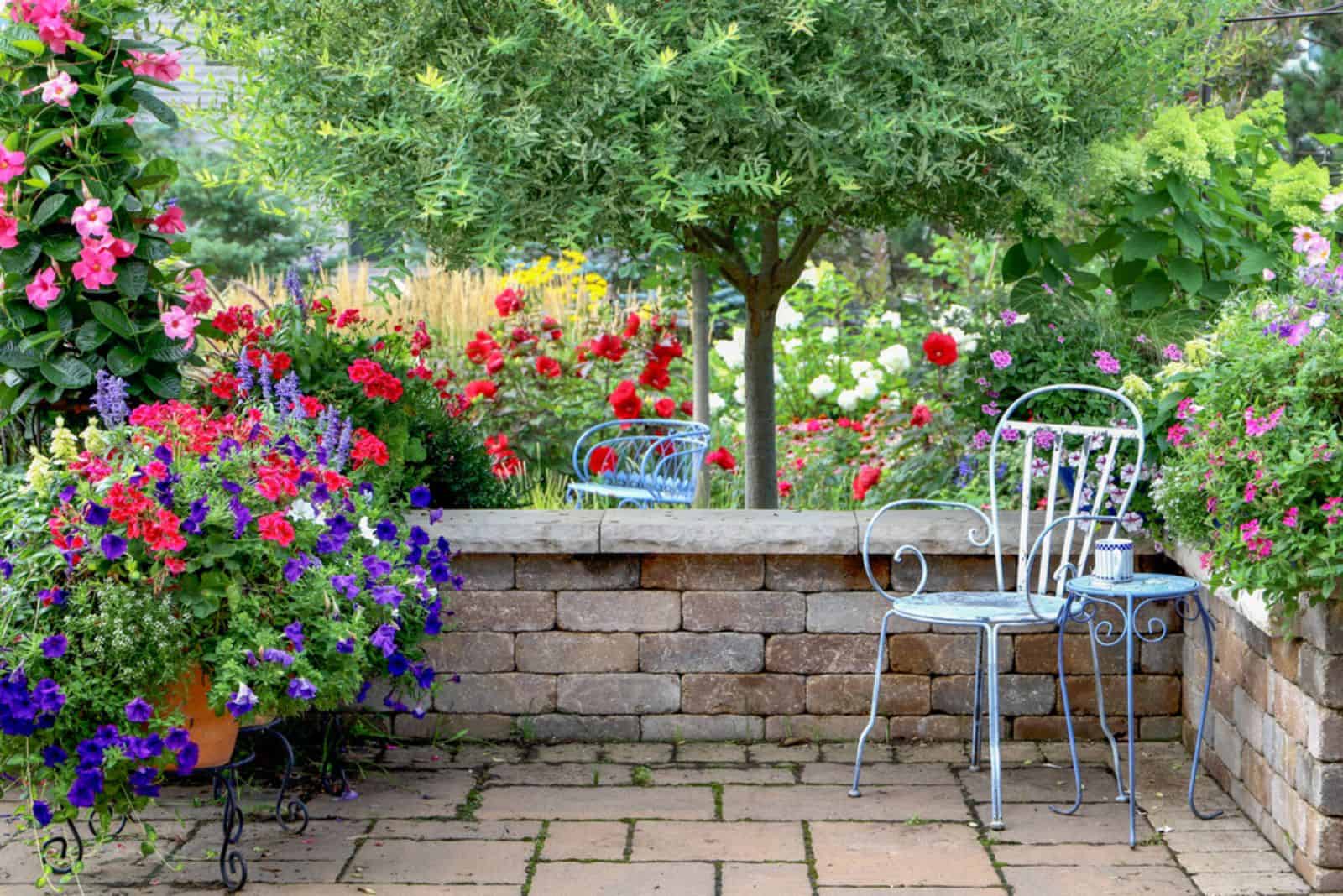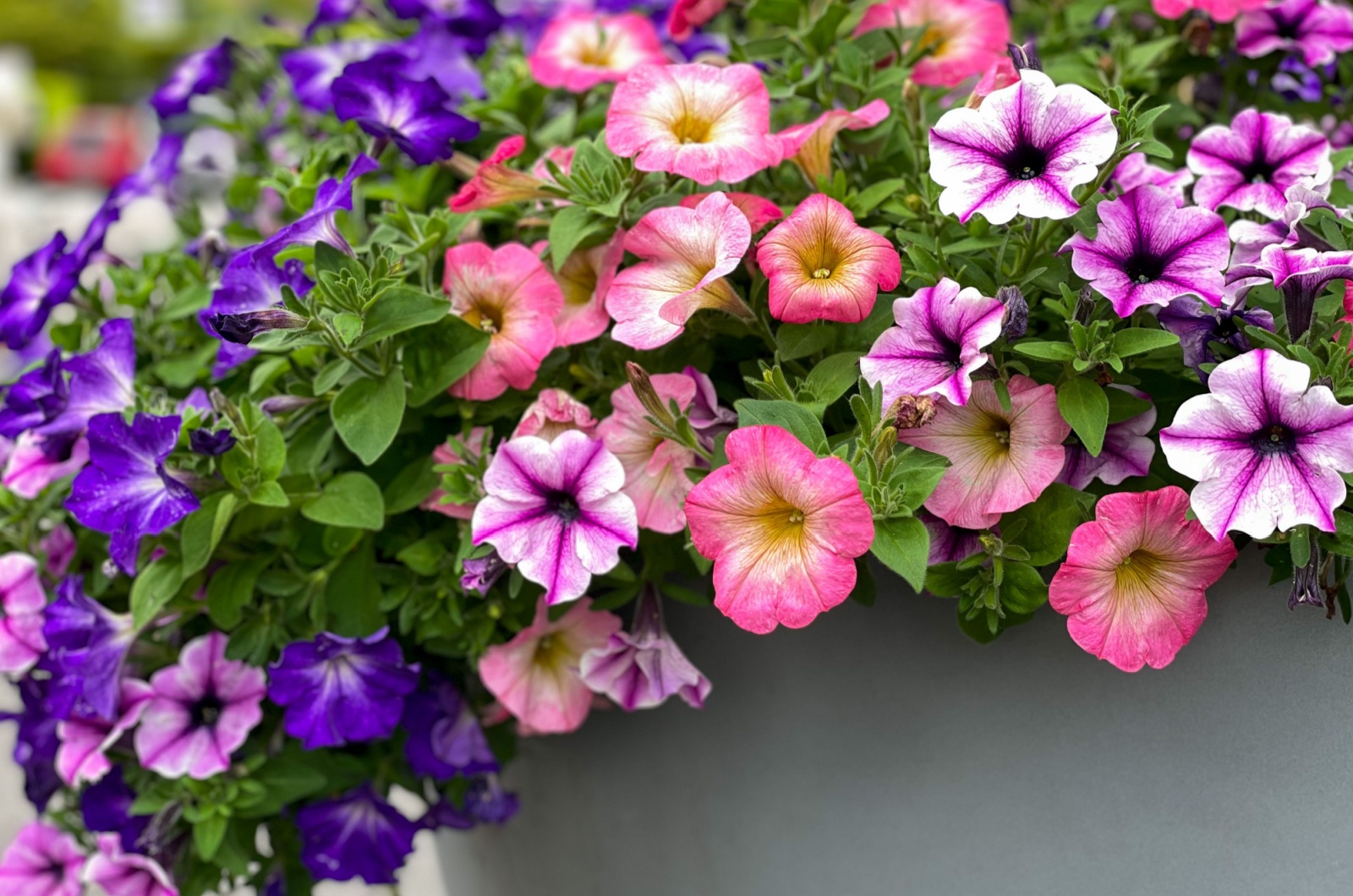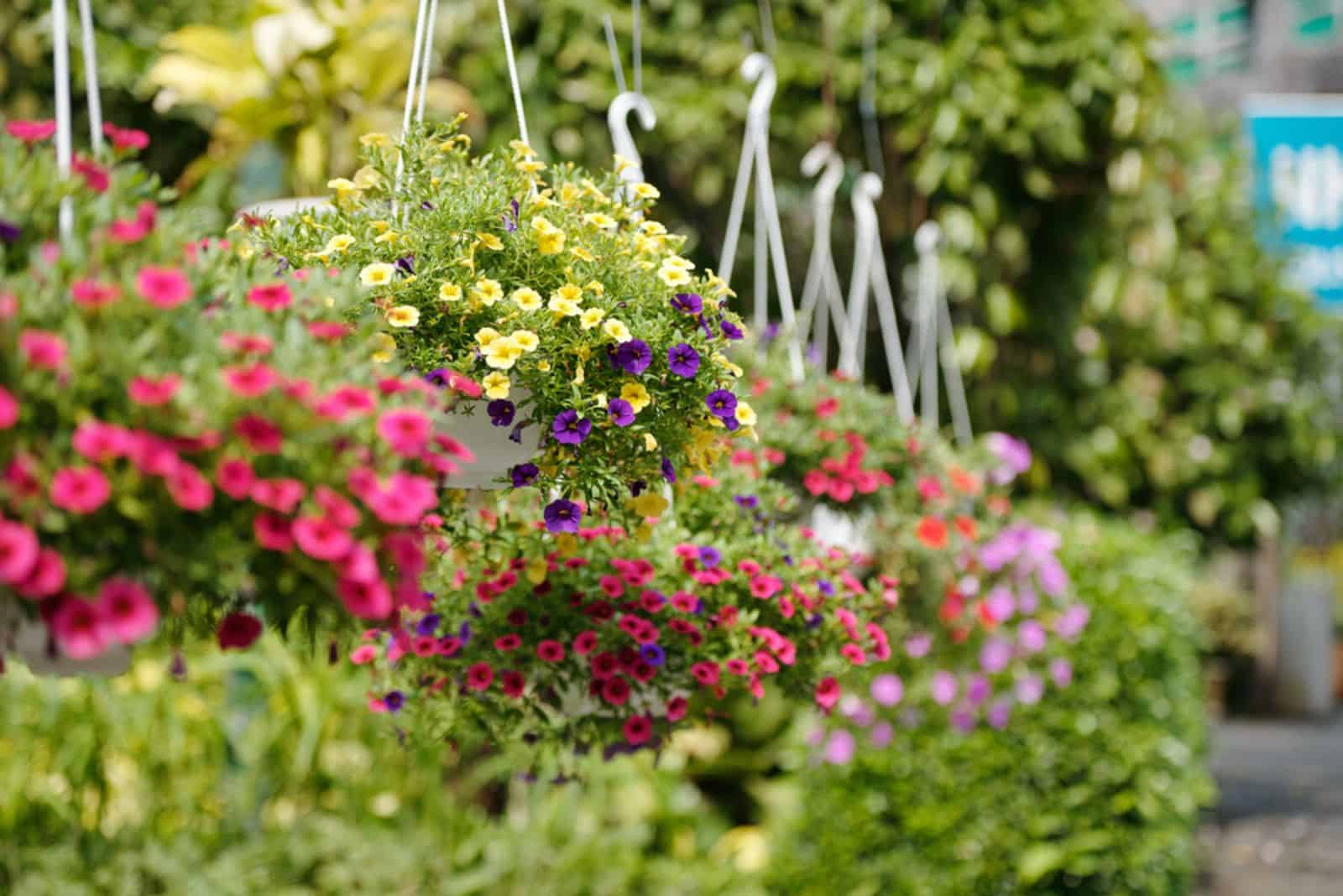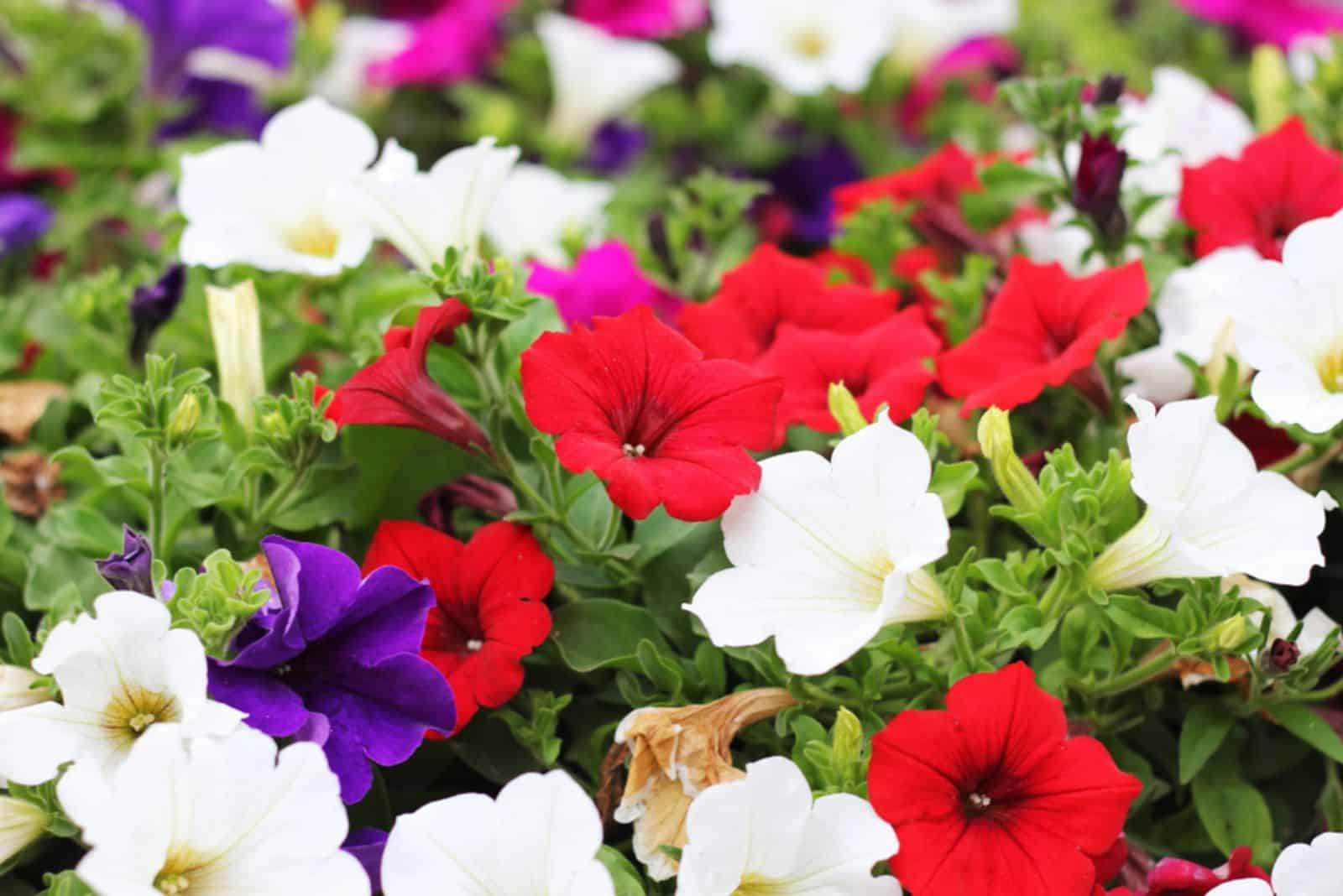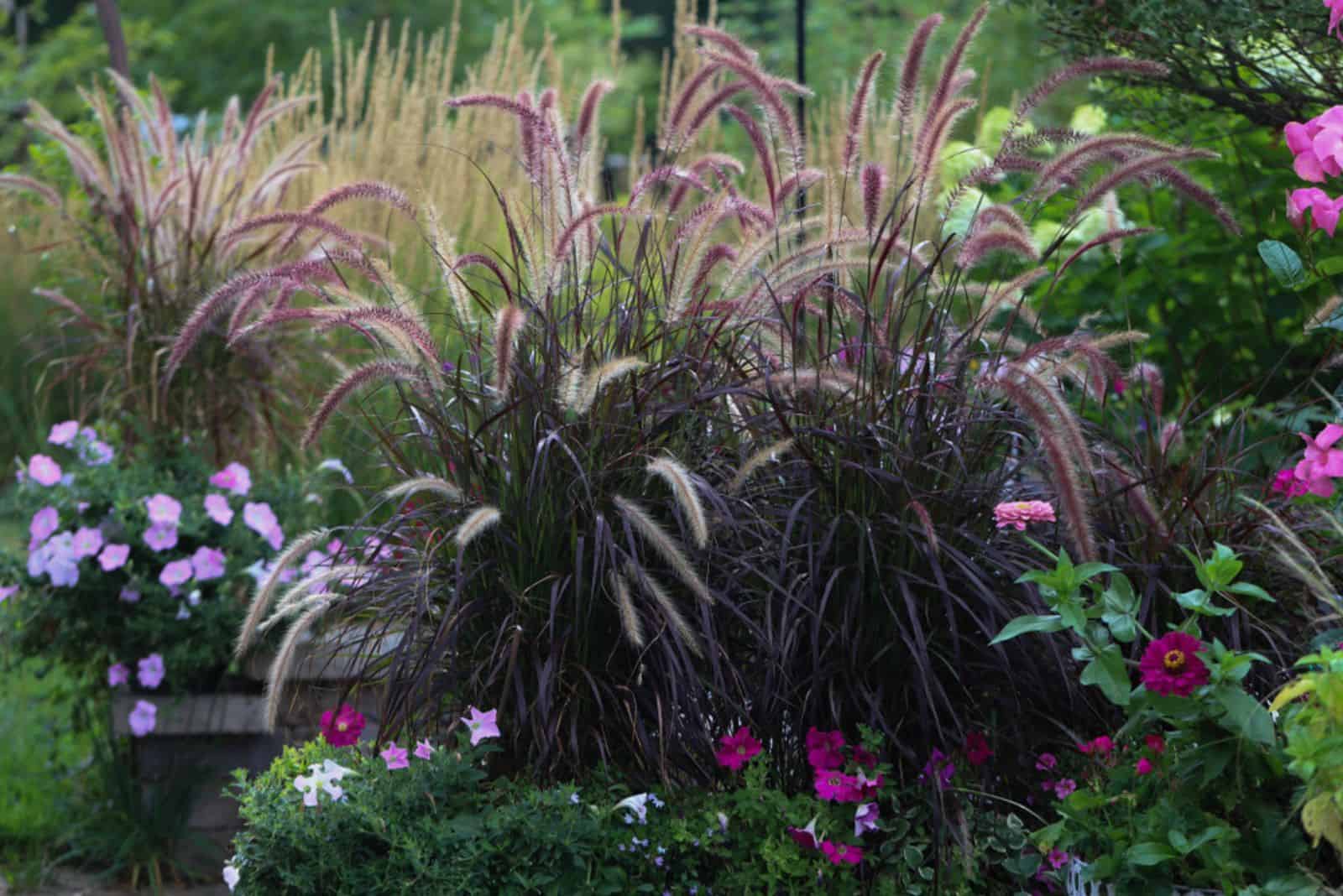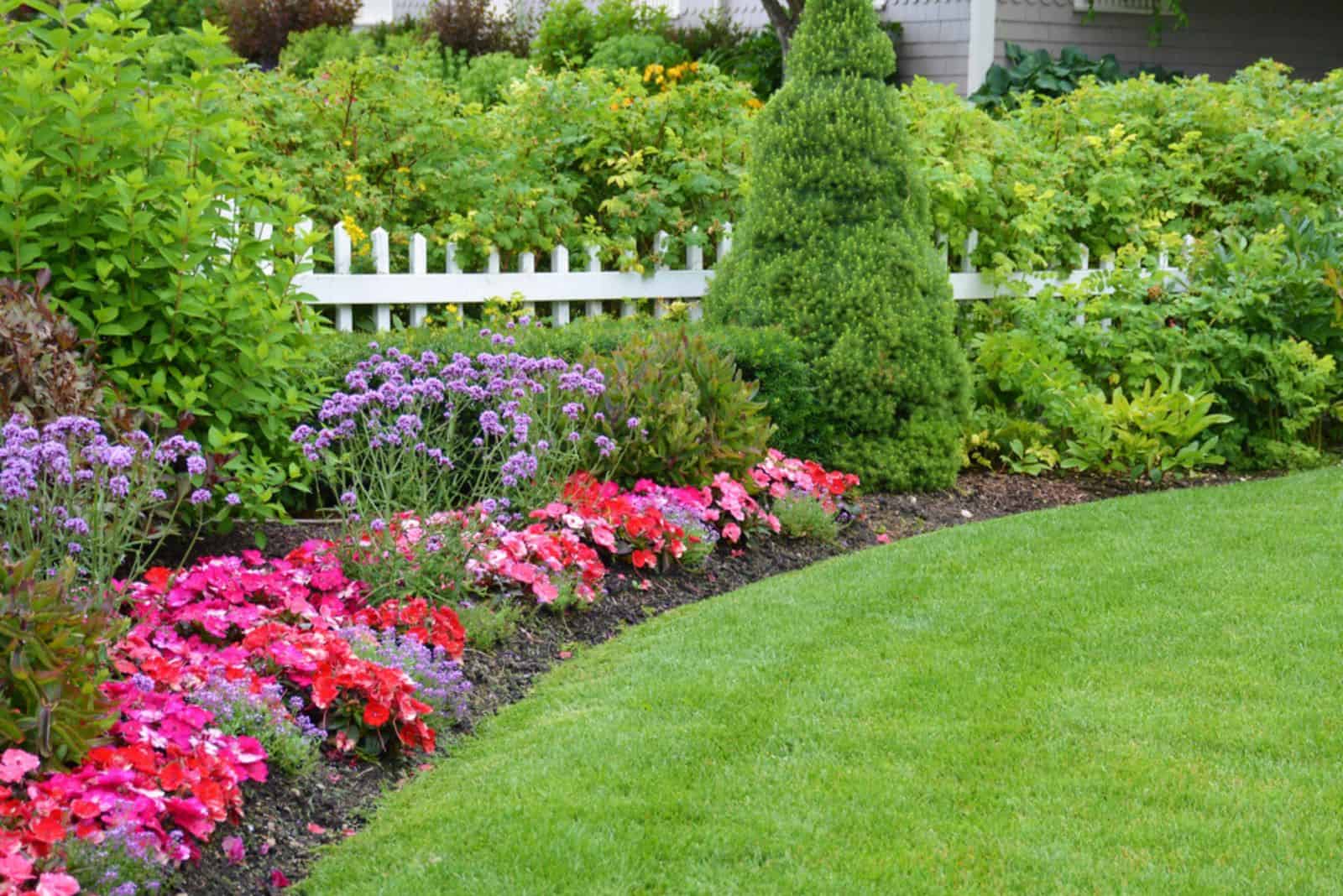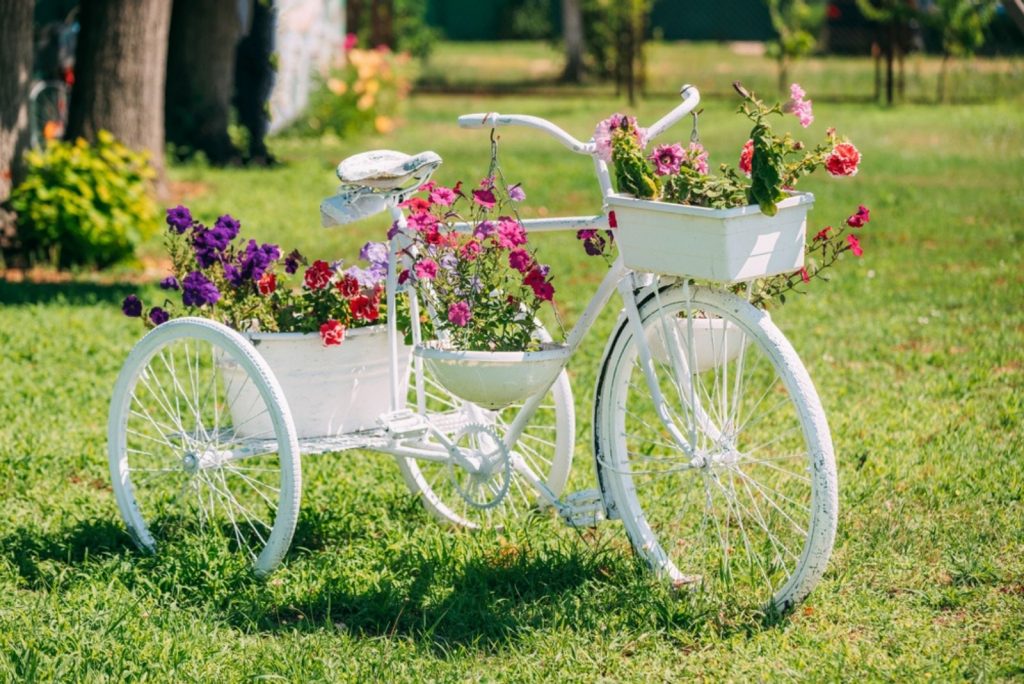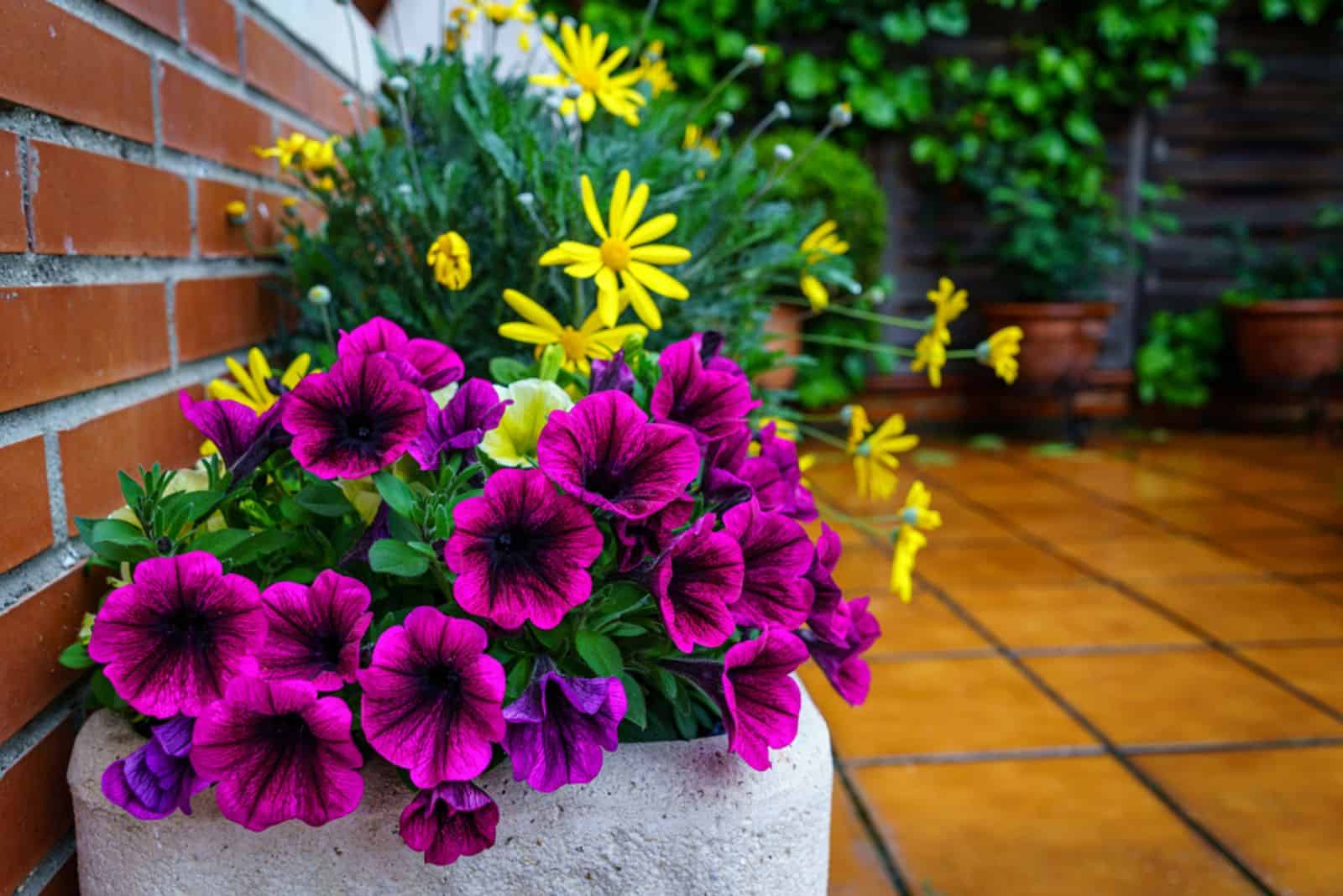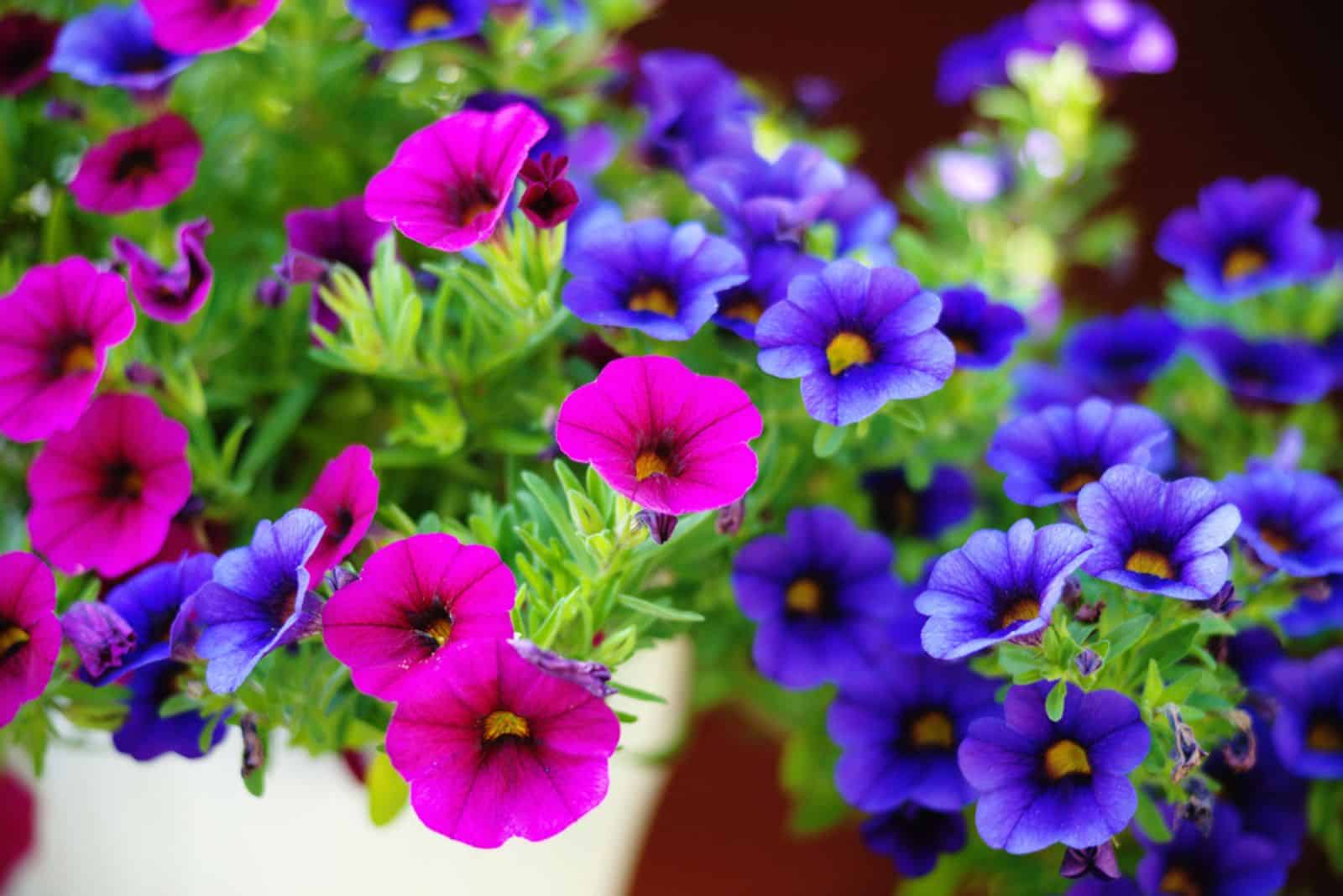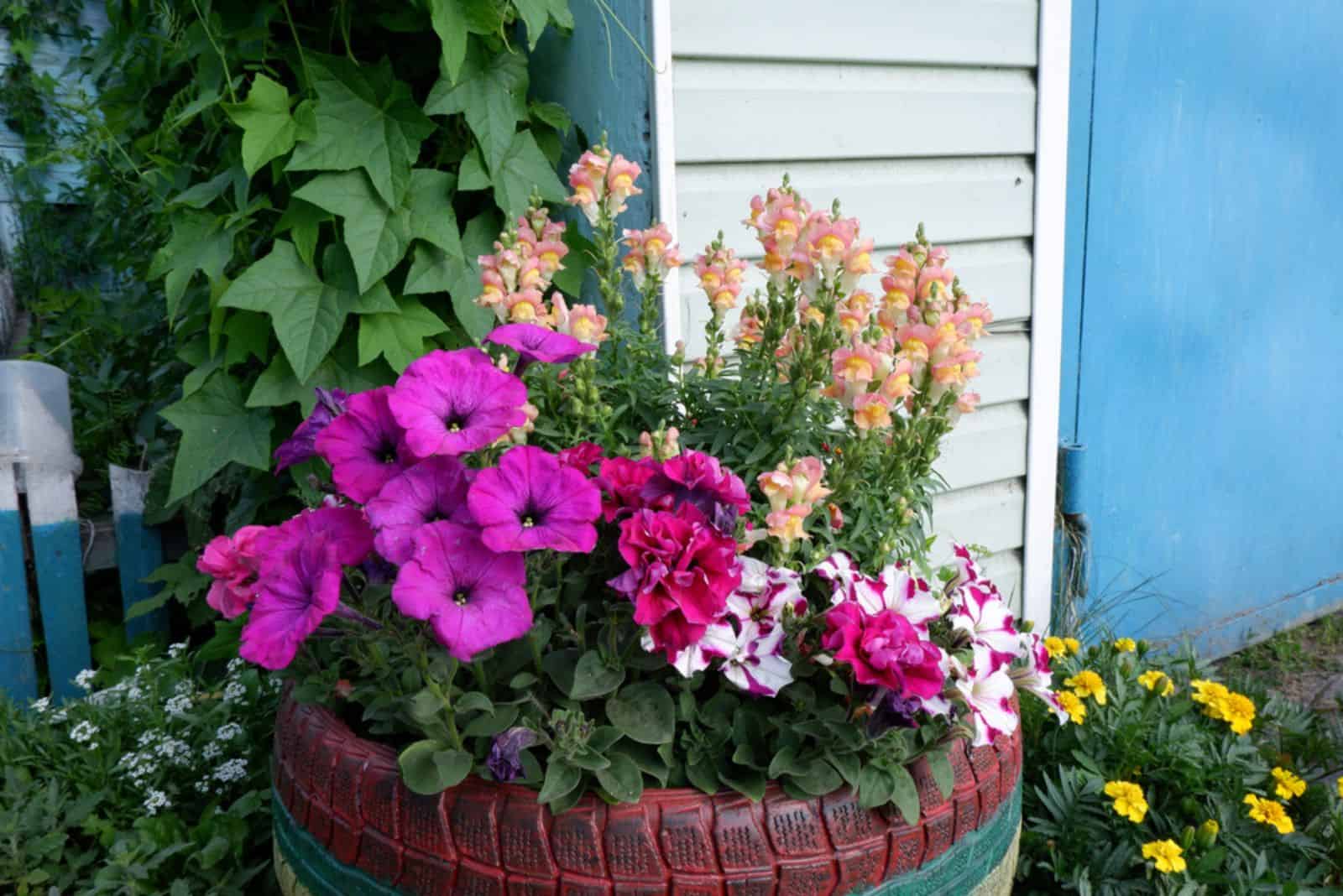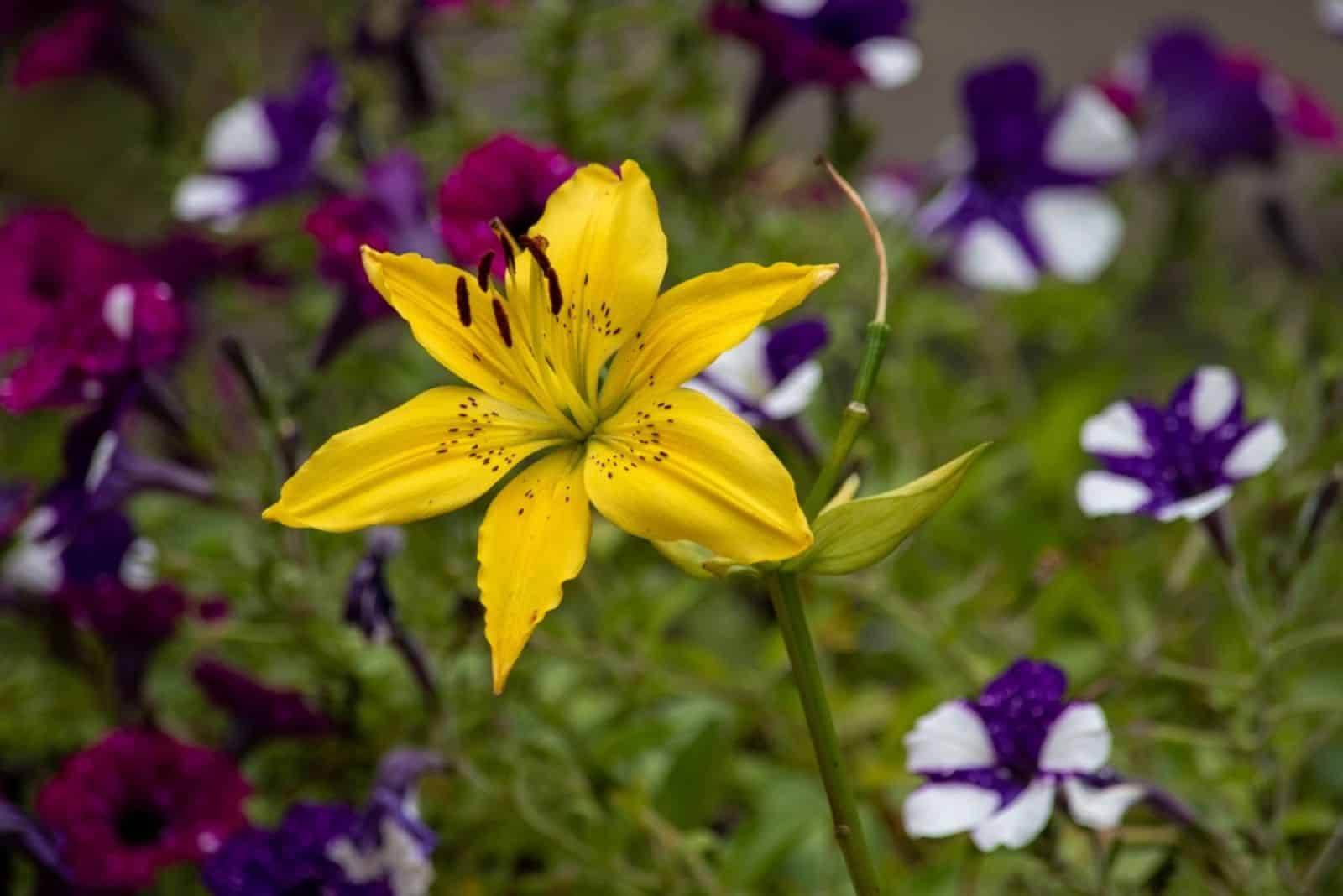Getting a gorgeous garden has never been easier! A great way to go about it is by getting some petunias and planting them wherever you want; they’ll look great in containers, window boxes, or garden beds!
The best part of landscaping with petunias is that it’s perfect for beginners since these plants don’t require much maintenance and they bloom until the first frost.
They spread easily and bring a riot of color, from purple and pink, red, and candy striped, to blue and velvety black.
Now let’s see how to style these annuals!
3 Tips For Starters
The first thing you need to know about petunias is that they love sunshine, so plant them where they can get at least 5-6 hours of direct light each day. (1)
The good news is that they can tolerate various types of soils; just make sure the drainage is excellent.
One more thing! Space your petunias properly since that’ll keep them forcing new blossoms all season long. Grandifloras and multifloras need about a foot between each plant, while milifloras don’t need more than 4-6 inches.
If you want to use it for ground cover, separate each plant 1.5 feet apart.
And that’s it, you’re ready to plant your petunias!
Landscaping With Petunias
One of my favorite things about landscaping with petunias is that you have so many choices. Growing them in pots, hanging planters, window boxes, rock gardens, flower beds, etc. are all viable options.
Let’s take a closer look at how you can style them.
1. Start A Container Garden
The simplest way to add character and color to your garden is by growing petunias in unique containers.
You could plant a couple of varieties in an old wine barrel or a tree stump. Combine similar shades for a monochromatic appearance or incorporate various colors for a bold statement.
If you want to combine modernity with classicism, use tall black or white planters for growing cascading petunias. Place them on your patio or at the entrance to your home!
Finally, you can really make the most of these flowers by using the thriller, filler, spiller method.
2. Plant Them In Hanging Baskets
Another way to add more color and a unique display to your landscape is by growing petunias in hanging baskets.
These look amazing on your patio, or you can make an interesting design in your garden by strategically placing a couple of hanging planters near your potted petunias.
The key to styling petunias in hanging baskets is placing them in a high traffic location where you’ll be able to enjoy them every day. This could be a porch or patio, balcony, your favorite seating area, etc.
Note: Decorate the baskets with a couple of other plants, such as geraniums, African daisies, periwinkles, lobelias, etc. for a more striking display.
3. Use Them To Decorate Your Windows
I’ve always admired my grandma’s windows, which are decorated with an explosion of color and delicate fragrances that engage the senses.
So imagine my surprise when I found out that all it took was a couple of window boxes and some wave petunias!
They’ll gently spill over, cascading as far as they can reach. Combine contrasting shades, such as red and white, or go for a more toned look with purple and lavender varieties.
And if you want more texture, feel free to add some geraniums.
4. Plant All-Petunia Flower Beds
Flower beds filled with petunias will add a sense of tradition to your garden, especially if you make a raised garden bed just for these beauties.
But if this feels like too much for you, you can always start slow and plant a couple of cultivars into your existing perennial flower beds to fill in the gaps.
Afterwards, you can go bold with designs and make spiral beds or islands, frame them with stones, and fill them with cascading petunias.
5. They’re Even Great For Night Gardens
Have you ever thought about planting a moonlight garden? This unique style will keep you in your backyard all day long!
Use a couple of plants that only flower at night, such as moonflowers, night jasmine, phlox, or a gladiolus, and combine them with the pure delight of white petunias.
Grow the annual petunias up front and choose varieties with a potent fragrance. Thumeblinas are highly scented and come in pastel shades that are perfect for a night garden.
If you place it in front of your bedroom window, you’ll fall asleep and wake up with irresistible fragrances filling your room.
6. And Bordering
Creating a flower border is a quick way to get an irresistible landscape, and petunias can help you with this.
Plant them along the edges of your outdoor space, and you’ll have a low-maintenance garden that looks like it belongs on the cover of Country Gardens magazine!
Pro tip: Spend an hour every week deadheading spent flowers to get more abundant blossoms.
7. Use Them To Make Statement Pieces In Your Garden
Sometimes, just one focal point is all it takes to transform your landscape.
You can create a large flower bed with tall ornamental grasses in the middle surrounded with petunias.
Or use an old cart, wheelbarrow, or bicycle and fill it with spilling petunias, bright marigolds, geraniums, and roses.
And if you happen to have an old dry well, you can fill it with dirt and decorate it with petunias and vines such as jasmine or columbine.
8. Or To Add Color To A Rock Garden
One thing that recently crossed my mind is using petunias in rock gardens.
The great thing about it is that you don’t have to worry about whether they’ll survive all year long since they’re annuals and will wither when the frost arrives.
You can use petunias to fill in gaps between stones, frame large boulders, or even as a ground cover.
Combine them with some drought-tolerant perennials such as lavender, blue rug juniper, rhododendrons, etc.
9. Popular Petunia Color Combos
You won’t have to worry about missing your favorite color when working with petunias; these plants have them all.
Whether you want a black magic petunia mixed with some white varieties, or red, white, and blue combined in your large container, you can have it.
Some are even two-toned, while others have white edges bordering the bright insides of petals.
There’s something for everyone!
Monochromatic
If you want to stick to a theme, then mixing petunias with similar shades should be fairly easy.
Purple and lilac are popular options, although burgundy and brick red are also great choices.
Purple, Lavender, Yellow
This bold combination may not seem like much, but once you add purple, lavender, and yellow petunias to your flower garden, you won’t be able to part with them.
Red And White
For contrast, mix white and red petunias with some bi-colored ones for a unique display.
And if you want to go a bit further, blue and white petunias look stunning against the green of boxwoods.
10. Petunias You Have To Try
I know you’re looking for ideas for landscaping with petunias, and choosing the proper species can be a game changer.
Here are a couple of varieties you can’t miss out on:
• Crazytunias
• Grandifloras
• Littletunias
• Milifloras
• Evening scentsation
• Night sky petunia
11. Combining Them With Other Flowers
Petunias symbolize hope and tranquility, among other things, and they really live up to that, especially when you plant them in your flower garden.
They look great on their own, but also enjoy companionship. Combine them with taller plants and have the petunias spilling over the rims of the container.
Here are a couple of great options:
• Snapdragons
• Lilies
• Daisies
• Coleus
• TI plant
• Areca palm
• Snake plants
The yellow of the lilies breaks the monotony of red-violet and deep purple petunias in this setting.
This thriller, filler, spiller technique stays within one color theme, but breaks the uniformity with candy petunias and pink-beige snapdragons.
Purple petunias and bright yellow daisies make for excellent companions and add a dash of color to this setting.
Hopefully these ideas inspired you to make some changes in your garden. I update mine constantly, and it’s always a work in progress.
Until next time!
References:
1. Brown, D. (2018). Growing Petunias. University of Minnesota Extension.

